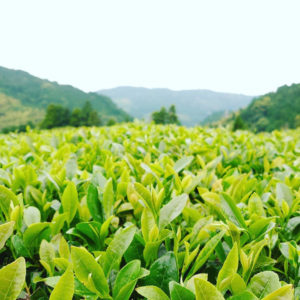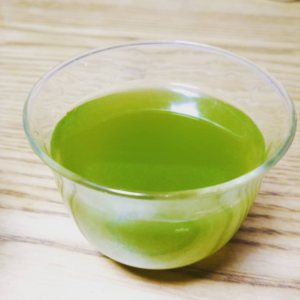
Tsuyuhikari (つゆひかり) can be translated as “dew light”.
This tea cultivar has a high valuation in terms of umami taste and color of its liquor.
While still a rare cultivar in terms of cultivated area, it’s becoming more popular in Shizuoka prefecture.
History of Tsuyuhikari
At the tea research institute of Shizuoka prefecture in 1970, Asatsuyu and Shizu-7132 were crossed.
The best seedling was selected, and by 2001 its value was already recognized because its use was encouraged in Shizuoka prefecture even though it still hadn’t been registered.
It finally became registered as a cultivar under the seed and seedling law in March of 2003.
The reason it was named Tsuyuhikari is because it comes from Asatsuyu, and there was the hope that it would bring a bright future (hikari means light in Japanese) for the tea industry in Shizuoka prefecture.
Characteristics of Tsuyuhikari
This cultivar can be harvested two days earlier than Yabukita, and hence it is a slightly early budding cultivar.
It exhibits a great vigor and a high yield at harvest, greater than Yabukita.
The mature leaves of Tsuyuhikari are green, elliptical in shape, and the edges aren’t as serrated as in other cultivars. Its young leaves are pale green.
This cultivar is even better at resisting cold weather than Yabukita, it’s very strong against anthracnose, and slightly strong against the blister blight, but susceptible to the bacterial shoot blight.

Once processed into sencha, Tsuyuhikari results in bright green leaves and a liquor often described in Japanese as emerald green. The color is even better if it’s a fukamushi sencha.
The aroma is fresh and slightly floral, and the taste has a good body and umami taste.
It can also make a good oolong tea.





August 18, 2020
Hello Ricardo, any suggestions on sourcing for where one might buy Tsuyuhikari sencha?
August 19, 2020
Hi Scott
I know that Yunomi sells one, but I haven’t tried it.
I received a sample from Sugimoto Tea but that sencha was available for a limited time only.